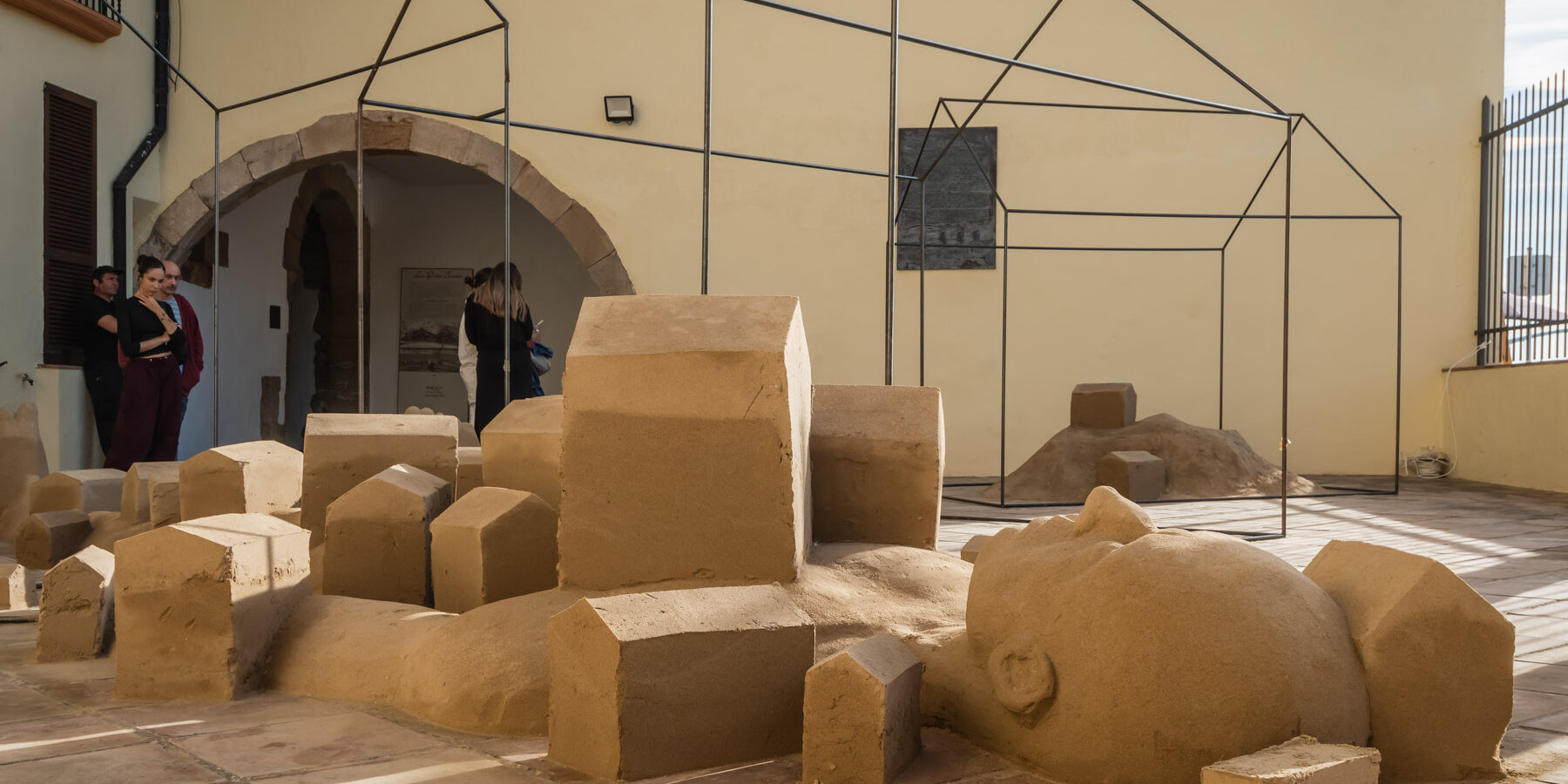Territoris d’habitabilitat
In this work the authors make use of corporality as the support —the diverse and multiple human body— and the territory on which humanity rests, and where the habitat is created through accumulations and agglomerations of constructions at different scales.
They use sand as the material that best represents the passage and imprint of humans on the territory. In our journey as a species, sand is present in all civilizations. It evokes the ephemeral nature of existence and the fragility of our bodies while affirming their ability to adapt and take on other forms, becoming the material of hope.
The authors use the geometry of metal structures to evoke the universal icon of housing. Metal is a material that, along with concrete, has provided constructive solutions to our society marked by urgency.
Arenas Posibles (Montserrat Cuesta and Sergi Ramírez) and Oscar Rodríguez.

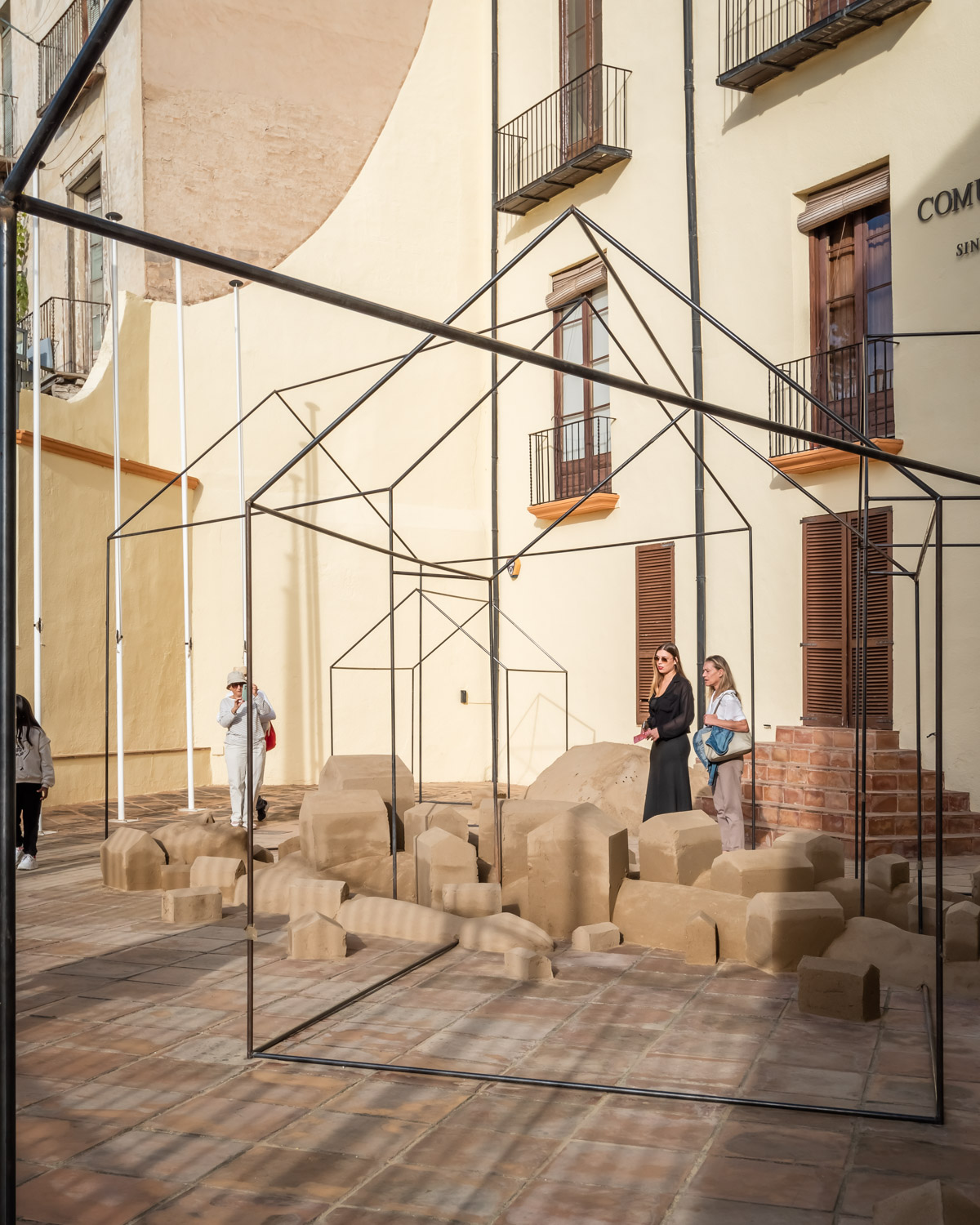
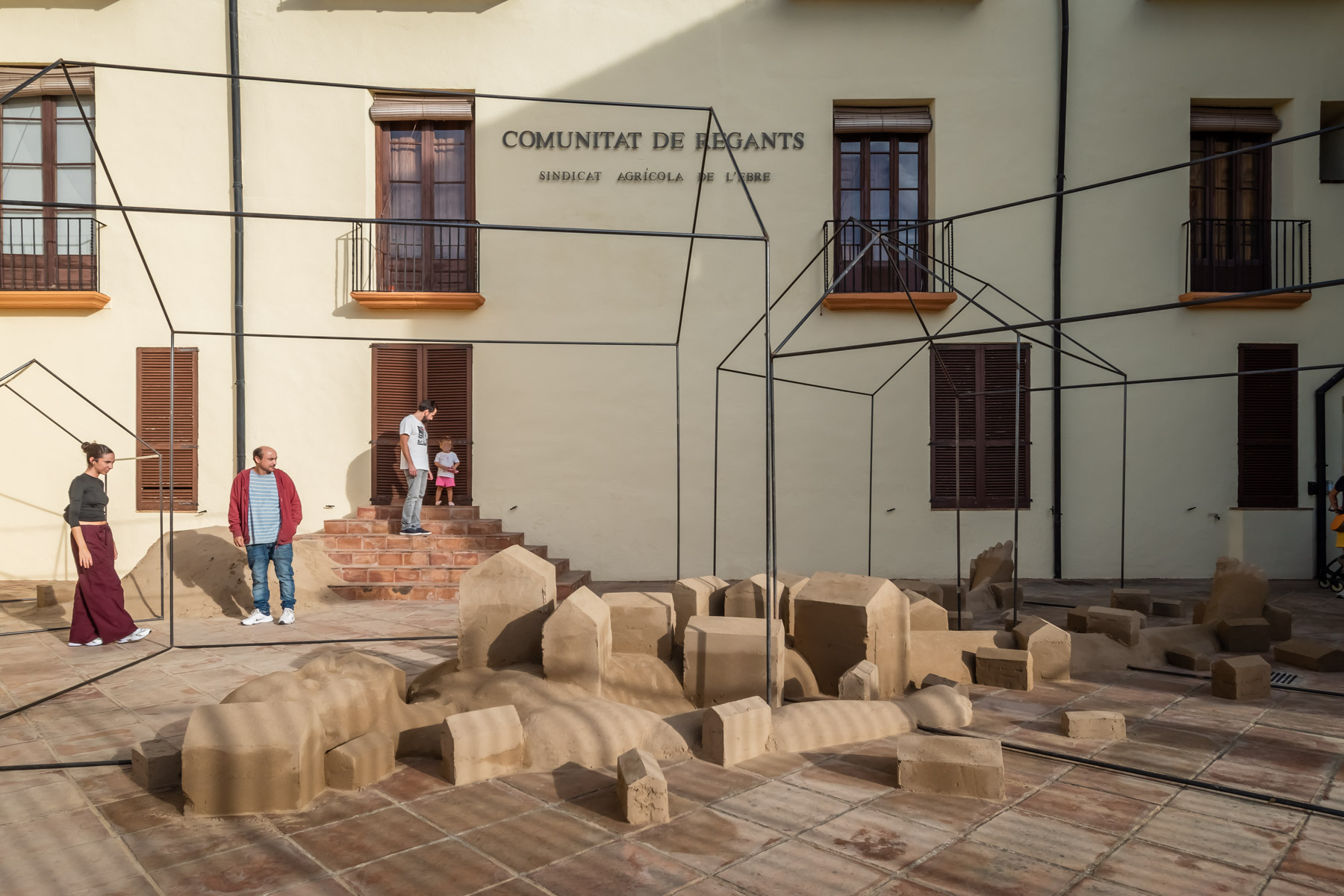
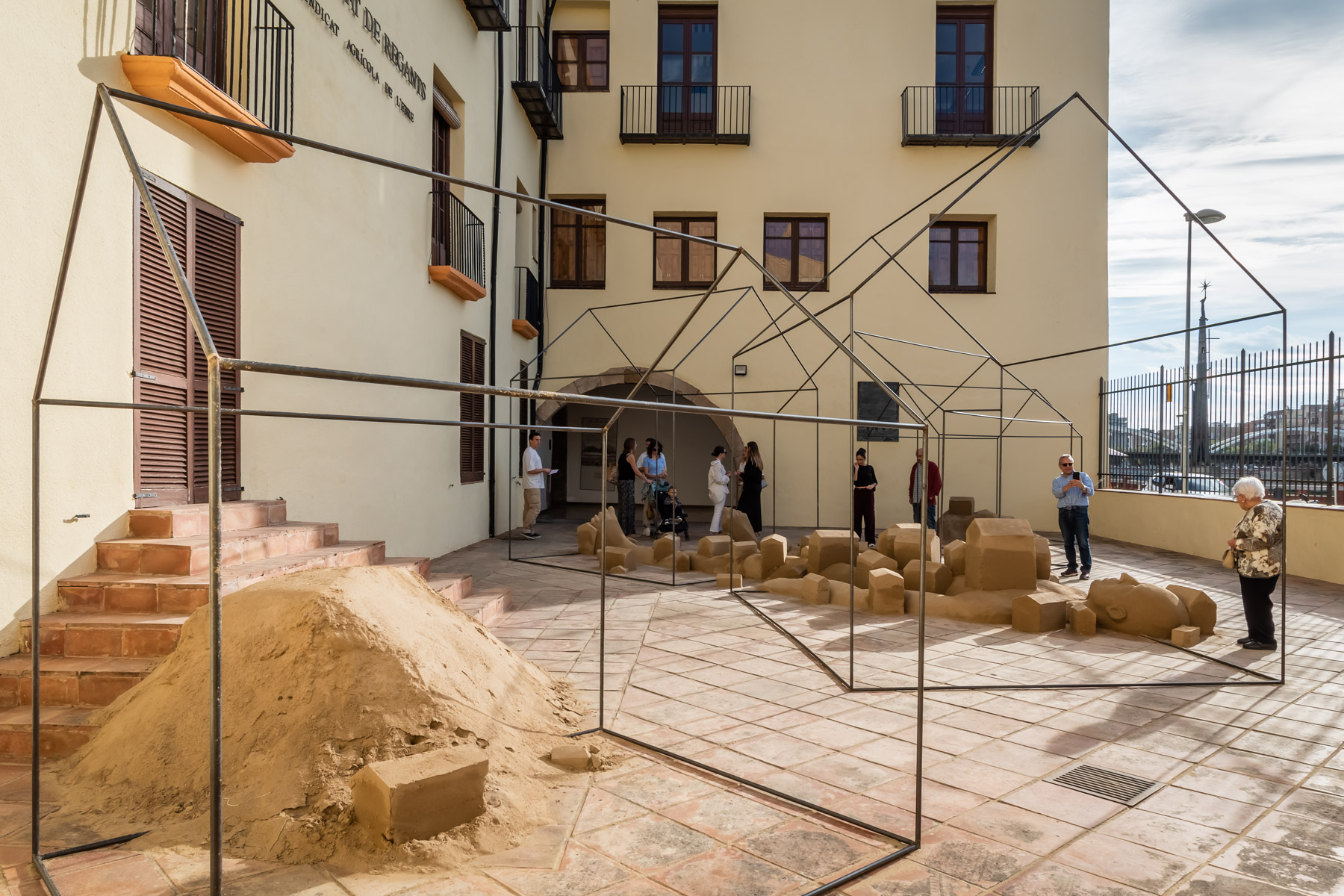
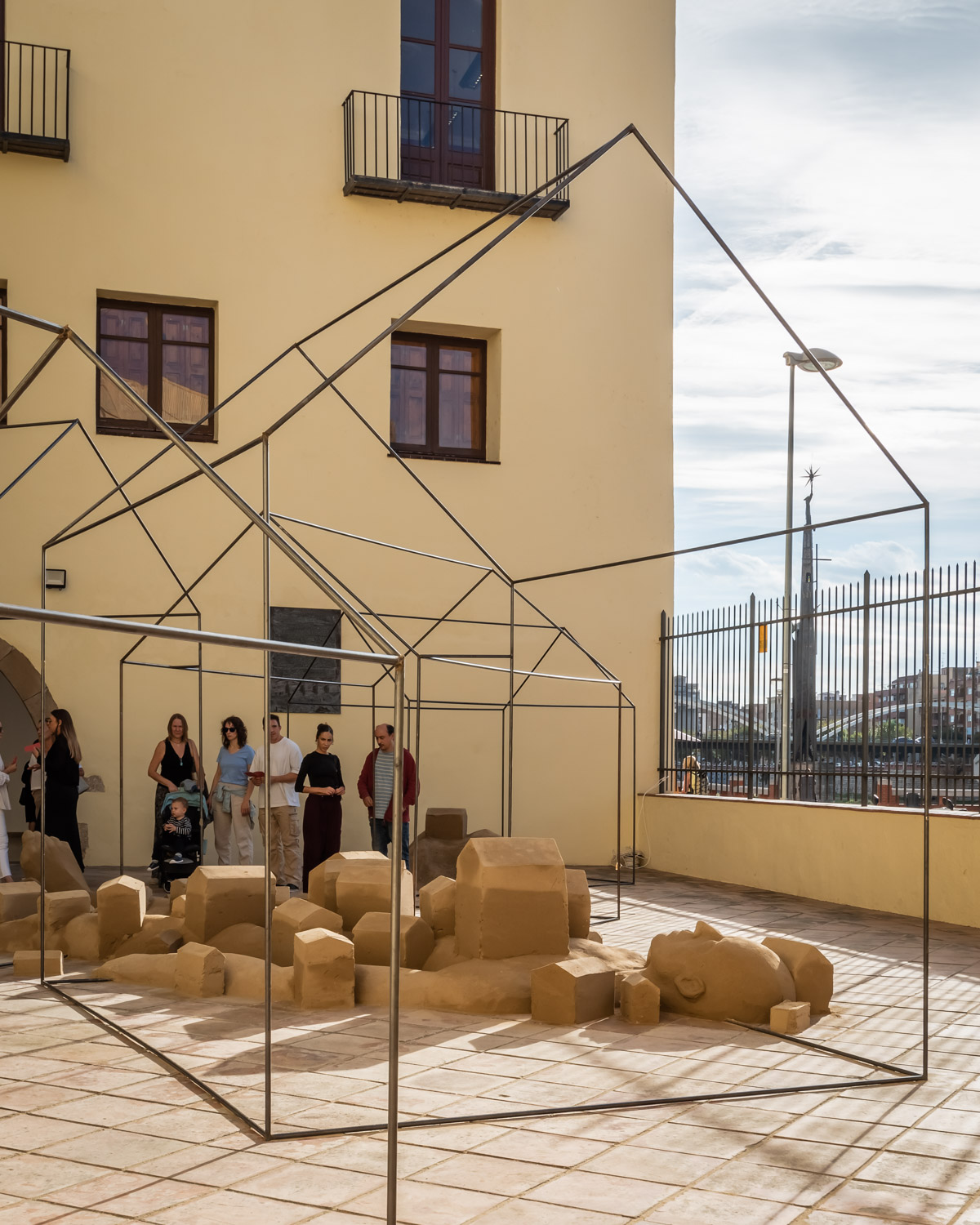


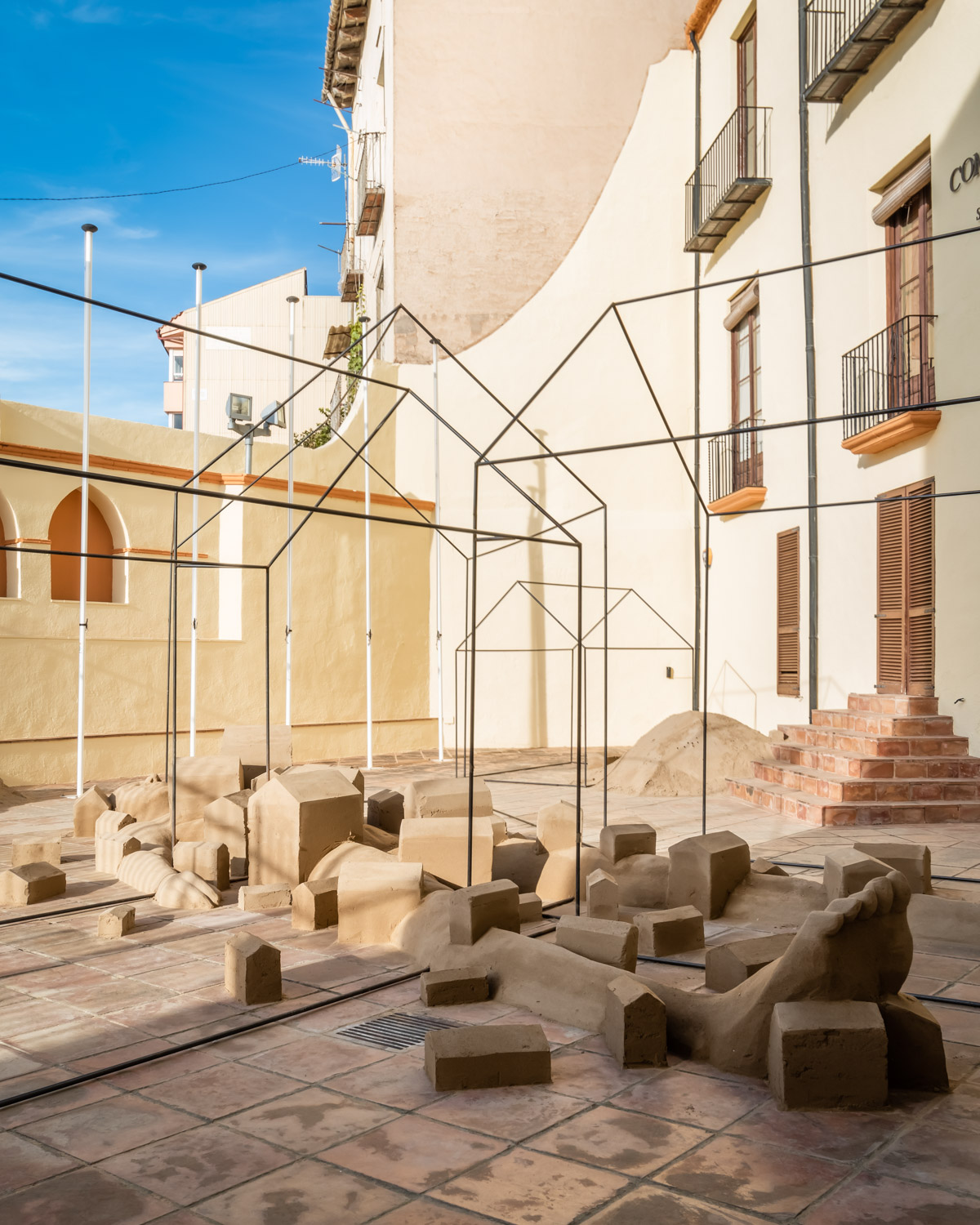
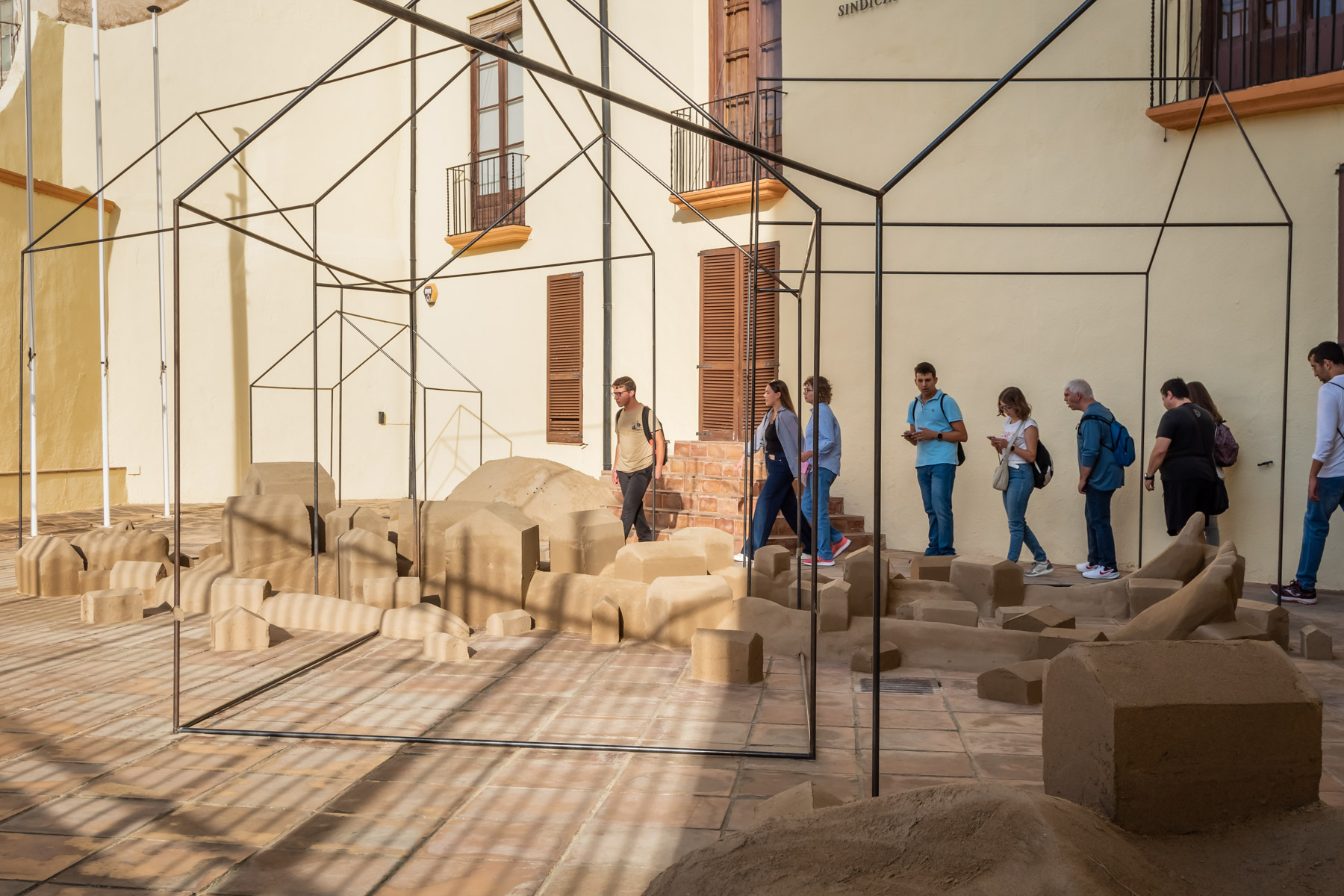
THE AUTHORS
Montserrat Cuesta and Sergi Ramírez have dedicated more than 35 years to sand sculpture. They have participated in different artistic projects by Martín Llavaneras, such as “Turba Turbo” at La Capella del Raval (Barcelona) and “Torres” at the Calouste Gulbenkian Modern Art Center in Lisbon. They have also been involved in the work “El peso del agua” by Jiménez Landa at the Centre del Carme Cultura Contemporània (Valencia). In the ninth edition of the A Cel Obert festival, they created an intervention in Plaza Sant Joan called “A la clara nit,” part of a project designed by the artist, creative, and cultural manager Pilar Lanau and L’Escola per l’Art i la Cultura de la Diputació in Tortosa.
Oscar Rodríguez is a visual artist, interior designer, and sculptor. He has participated in various exhibitions, workshops, and artistic events in Spain, Mexico, Cuba, Guatemala, the USA, Senegal, and other countries.
